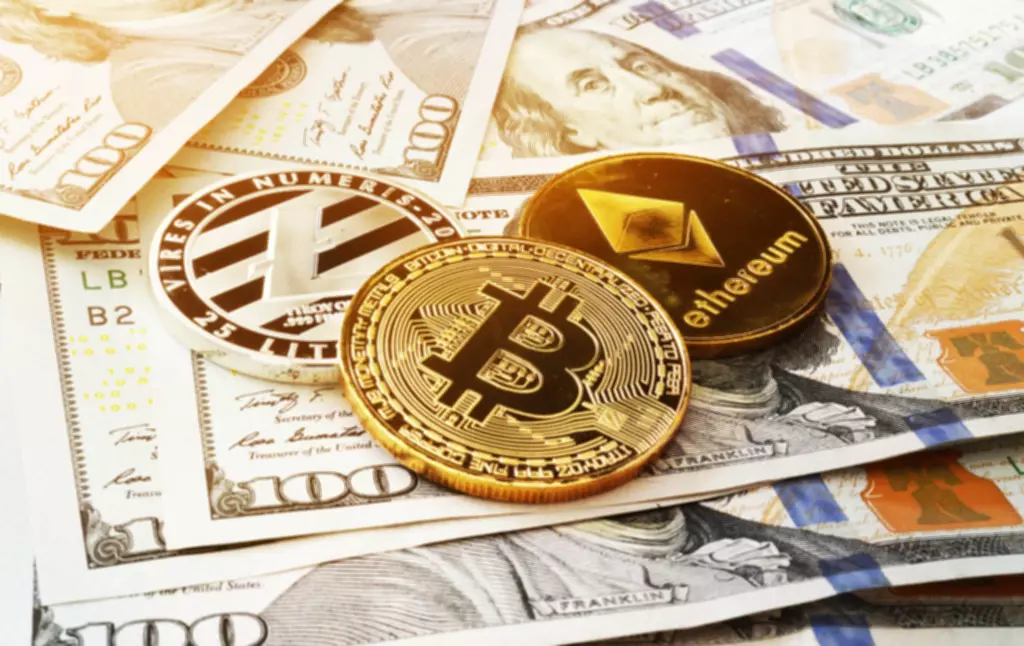Content
Once a token is sent to a burner address, the coin remains recorded on the blockchain ledger. Still, it is entirely inaccessible to anyone as with no private key, there is no way for the token to be removed from the wallet. In November 2021, the Terra project burned 88.7 million LUNA tokens to reduce the supply in Terra’s community pool.
- A consensus mechanism is a set of protocols that use multiple validators to agree that a transaction is valid.
- This is a technical process, but it essentially entails telling the smart contract the number of coins they want to burn.
- Crypto minting is the part of mining when new coins come into existence through proof-of-work.
- In total, over 400 trillion SHIB were burned, which amounted to around $7 billion at the time.
- Interestingly, a few smaller blockchains use a proof-of-burn consensus mechanism to verify transactions.
- Generally speaking, restricting the supply of a cryptocurrency should lead to an increase in the value of the existing tokens as they become scarcer.
This burn was started to reduce the supply of the cryptocurrency in a bid to increase the value of the coins. If you’re interested in token burning, you need to know about smart contracts. Here is your ten minute crash course on this key crypto concept – thanks School of Block. One good example of this is Olympus DAO. It’s native currency OHM is managed by an algorithm that adjusts the circulating OHM supply to control the value of the token. If the price of OHM drops below a certain point the algorithm will automatically burn some of its supply to maintain price parity with DAI. Conversely, if the price exceeds this level, new tokens will be minted and added to the supply to stabilize the token value.
Proof of Burn Explanation
There are several reasons why Ethereum’s developers have started burning ETH on such a large scale. Firstly, there is an aim to reduce the rewards available to Ethereum miners, as some try to increase their rewards by taking advantage of the mining system. https://xcritical.com/ Secondly, ETH is being burned to stabilize Ethereum transaction fees. And, of course, burning ETH can mitigate the increase of its supply , resulting in a price hike. Yes, coin burning is one of the ways you can earn money in the cryptocurrency world.
The centralized crypto exchange Binance is one of the most famous companies to employ a token-burning mechanism. Since Binance released its BNB token in 2017, it has pledged to buy and burn a portion of its tokens every quarter. Bitcoin news portal providing breaking news, guides, price analysis about decentralized digital money & blockchain technology. In this article, I will be looking at Shiba Inu, its reported increase in burned tokens and what this might mean, and a new meme coin, Rocketize .
How much is $100 million Shiba Inu worth?
If you’re interested in getting into the game, however, it’s a necessary one to understand when investing in certain assets. That’s because some token burns are automated to happen regularly or are disclosed well in advance, and are effectively priced into the value a token trades at well before the burn takes place. It’s also possible that other news regarding a digital asset can have a more outsized effect on any price movement. Developers also burn tokens as a way to hide whales who hold large portions of a cryptocurrency. Let’s say a developer launches a cryptocurrency with 1 billion tokens, keeps 100 million, and immediately burns 600 million.
Coin burning reduces the supply, making tokens of that cryptocurrency scarcer. That scarcity can lead to an increase in price and benefit investors. Cryptocurrency burning is the process in which users can remove tokens from circulation, which reduces the number of coins in use. The tokens are sent to a wallet address that cannot be used for transactions other than receiving the coins. The wallet is outside the network, and the tokens can no longer be used. Even if a cryptocurrency doesn’t have a built-in burning mechanism, it doesn’t mean people can’t burn it.
The two main factors related to gas fees include block time, the time required for a respective blockchain to generate new blocks, and transaction throughput, or how many transactions a single block can process. In general, the faster the blocks are generated and the more they hold, the less competition there is, resulting in a cheaper transaction fee for all users. Also, never reveal your wallet’s private keys if you are asked to as part of a project’s token burn. If someone is asking for your private keys or recovery phrase, they are trying to scam you 100% of the time. Crypto projects that use the proof-of-burn consensus mechanism also burn tokens.
Tether burned a total of 3 billion USDT tokens—using an account referred to as ‘Tether Treasury’—in two consecutive burns. The burn was utilized to boost the stablecoin after negative infuences on Tether saw it depeg to $0.95. Unlike fiat currencies, where governments can print money as they deem fit, most cryptocurrencies are created with a fixed supply limit. Bitcoin, for example, has a maximum coin supply of 21 million, and the more it gains momentum and mainstream adoption, the higher its price will go, as there are only a limited number of coins to go around.

Here, we will talk about the practice and theories behind token burning and discuss the various applications where it fits within the crypto ecosystem. Miners that burn more coins than others have a higher virtual mining power, which allows them to mine new blocks with a high probability and add them to the network. To use Binance as an example once again; BNB is burned on a quarterly basis, therby reducing long-term demand for the coin, but making it attractive to those with long-term perspectives.
Interlinking the success of HackenAI with the HAI Token
With supply continually going down, and demand on the rise, Shiba Inu is likely to test the $0.001 mark in 2030 for the first time since it was launched. Algorithmic stablecoins seek to overcome this by creating coins of stable value via control of the supply. Among many revolutionary features, perhaps the most appealing aspect of crypto currency is the control it restores to users. These CHSBs are then burnt, permanently removing them from the total supply. The constant burning keeps a steady value of the token and also bets for along term price rise . Using metrics from the same period and considering the same crash factor, the price has remained around $0.28 to $0.31 from November 2019 to August 2020.

The burnt crypto is sent to a wallet address that no one can use for transactions other than receiving coins. This wallet is outside any network, so the tokens are not accessible. Many cryptocurrency projects embrace crypto burning as a mechanism to artificially boost their token’s value as a way to reward holders and attract additional investors. Since crypto burning reduces the circulating supply of a currency and creates scarcity, its price typically increases. For instance, a new cryptocurrency can launch with 1 trillion tokens worth a fraction of a cent, drawing in investors with the low price.
The ‘Below-The-Line’ People Of Hindi Cinema
Token burning can be used by absolutely anyone who owns private keys for a given token – in theory it could be used to simply get rid of unwanted tokens received in drops. The underlying importance is that crypto empowers users a truer form of ownership by enabling us to play with supply, and this gives rise to a host of new possibilities. The most well-known benefit is that token burns may result in the value of the coin increasing. The corresponding increase in the value of each XLM unit demonstrates that token burns impact the price of a coin, at least in the short term. Like many tokens, however, XLM fell during the Coronavirus crash, but since late April 2020 the token stabilised, reaching the $0.10 mark in July of the same year. The cryptocurrency exchange Binance began holding quarterly burns of its Binance Coin in 2017.
Crypto burning can be used to protect a crypto network from a Distributed Denial of Service attack, in which spam requests and transactions slow the network down, often bringing it to a halt. Rather than paying miners/validators transaction fees for confirming transactions and securing the network, some cryptocurrencies use a mechanism in which transaction fees are burned. To all intents, crypto burning is a fairly straightforward practice.
Still, crypto burning is generally considered a favorable move for tokenholders. Let’s take a look at some of the most common reasons for token burns. Coin burning gained popularity in 2017 and 2018 when coins like Binance’s BNB token held burning events to lower supply in the hope that it would increase token prices. In traditional markets, companies that issue stocks may purchase shares back at the market price to minimize the overall amount of shares in the market. Crypto projects are applying the same concept to achieve a similar goal.
Money
In one spectacular 24-hour period, over 100 million tokens were burned. Every month, SwissBorg adds 20% of the profits made on fees in theSwissBorg app , to a reserve to protect the price of the CHSB token. When the price moves into a bearish zone based on the 20-day moving average, SwissBorg automatically buys back tokens.
What Does Burning Crypto Mean?
Often, a token burn is viewed as a “bullish” sign in the crypto market. Indeed, many crypto projects see an initial price jump soon after developers announce a token burn. Many projects use token burns to draw attention to their projects and offer an incentive for new investors. Crypto projects often use these burning techniques to make their tokens deflationary.
In general, this practice is intended to increase the value of the shares while increasing the company’s financial performance. Unfortunately, it doesn’t always work as intended and sometimes has the opposite effect. Shares are also repurchased as a method of control—companies can use this tactic to prevent a hostile takeover—the act of buying shares to gain a majority and thus ownership of the company. There are a few other practical reasons for burning cryptocurrency. Some projects have regular burning events built into their code. The aim here is to reassure potential investors that the future supply of the token will continue to shrink, calming concerns of inflation or an overly diluted market.
Crypto burning is often interpreted as a positive event in crypto, but it’s not necessarily a good feature. Just because a project has a burning mechanism doesn’t mean it’s destined to rise in value. If a cryptocurrency doesn’t have a clear vision, strong leaders, or robust technology, it’s unlikely a burning mechanism will help drive long-term demand. Another famous example of crypto burning is Ethereum’s EIP-1559 upgrade of 2021.
Some token holders liken crypto burns with stock buyback programs. In both strategies, leaders deliberately take their shares or tokens out of circulation. Burning large amounts of cryptocurrency tokens can have the effect of increasing the scarcity of that token.
We’re also a community of traders that support each other on our daily trading journey. Some projects actually build into their code an automatic schedule of burning. Unlike Bitcoin, which is designed to be scarce, SHIB is intentionally abundant — with a total supply of one quadrillion. To explain the concept better, it’s worth noting that Shiba Inu’s market cap would have to be roughly $5.89 trillion to reach one cent per token. But to address the original question at hand of whether Shiba Inu can reach $1 in 2023, the answer is effectively no.
